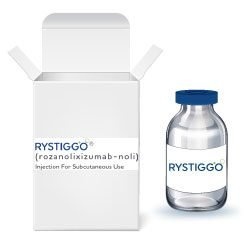
Инструкция по применению РИСТИГГО 140 мг/мл РАСТВОР ДЛЯ ИНЪЕКЦИЙ
Введение
Инструкция: информация для пациента
Ристигго 140 мг/мл раствор для инъекций
розаноликсимаб
Этот препарат подлежит дополнительному наблюдению, что ускорит обнаружение новой информации о его безопасности. Вы можете внести свой вклад, сообщая о нежелательных реакциях, которые у вас могут возникнуть. В конце раздела 4 содержится информация о том, как сообщать о этих нежелательных реакциях.
Прочитайте внимательно всю инструкцию перед началом использования этого препарата, поскольку она содержит важную информацию для вас.
- Сохраните эту инструкцию, поскольку вам может потребоваться прочитать ее снова.
- Если у вас есть какие-либо вопросы, проконсультируйтесь с вашим врачом, фармацевтом или медсестрой.
- Этот препарат назначен только вам, и не передавайте его другим людям, даже если у них такие же симптомы, как у вас, поскольку это может нанести им вред.
- Если вы испытываете нежелательные реакции, проконсультируйтесь с вашим врачом, фармацевтом или медсестрой, даже если это возможные нежелательные реакции, которые не указаны в этой инструкции. См. раздел 4.
Содержание инструкции
- Что такое Ристигго и для чего он используется
- Что нужно знать перед началом использования Ристигго
- Как использовать Ристигго
- Возможные нежелательные реакции
- Хранение Ристигго
- Содержание упаковки и дополнительная информация
1. Что такое Ристигго и для чего он используется
Что такое Ристигго
Ристигго содержит активное вещество розаноликсимаб. Розаноликсимаб является моноклональным антителом (типом белка), предназначенным для распознавания и связывания с FcRn, белком, который удерживает антитела типа иммуноглобулина G (IgG) в организме в течение более длительного периода.
Ристигго используется в сочетании со стандартным лечением у взрослых для лечения генерализованной миастении (МГ), аутоиммунного заболевания, которое вызывает мышечную слабость и поражает несколько мышечных групп тела. Заболевание также может вызывать затруднение дыхания, крайнюю усталость и затруднение глотания. Ристигго используется у взрослых с МГ, которые производят аутоантитела IgG против рецепторов ацетилхолина или мышечной киназы.
При генерализованной миастении (МГ) эти аутоантитела IgG (белки иммунной системы, которые атакуют части собственного тела человека) атакуют и повреждают белки, участвующие в общении между нервами и мышцами, которые называются рецепторами ацетилхолина или мышечной киназой.
Связываясь с FcRn, Ристигго снижает количество антител IgG, включая аутоантитела (антитела против собственного организма) IgG, что способствует улучшению симптомов заболевания.
2. Что нужно знать перед началом использования Ристигго
Не используйте Ристигго
- Если вы аллергичны к розаноликсимабу или любому другому компоненту этого препарата (указанному в разделе 6).
Предостережения и меры предосторожности
Проконсультируйтесь с вашим врачом, фармацевтом или медсестрой перед началом использования этого препарата, если вы находитесь в одной из следующих ситуаций:
Миастенический кризис
Возможно, ваш врач не назначит этот препарат, если вы используете респиратор или, вероятно, будете использовать его из-за мышечной слабости, вызванной МГ (миастенический кризис).
Воспаление оболочек, окружающих мозг и спинной мозг (асептический менингит)
Были зарегистрированы случаи асептического менингита в связи с этим препаратом. Обратитесь за медицинской помощью немедленно, если вы испытываете симптомы асептического менингита, такие как сильная головная боль, лихорадка, жесткость шеи, тошнота, рвота и/или непереносимость яркого света.
Инфекции
Этот препарат может снижать вашу естественную устойчивость к инфекциям. Прежде чем начать лечение этим препаратом или во время лечения, сообщите вашему врачу, если у вас есть какие-либо симптомы инфекции (чувство жара, лихорадка, озноб или дрожь, кашель, боль в горле или герпес могут быть признаками инфекции).
Гиперчувствительность (аллергические реакции)
Этот препарат содержит белок, который может вызывать реакции, такие как кожная сыпь, отек или зуд у некоторых людей. Вас будут наблюдать за признаками реакции на инфузию во время лечения и в течение 15 минут после этого.
Вакцинация (вакцины)
Сообщите вашему врачу, если вы получили вакцину в течение последних 4 недель или планируете вакцинацию в ближайшем будущем.
Дети и подростки
Не давайте этот препарат детям младше 18 лет, поскольку использование Ристигго не было изучено в этой возрастной группе.
Другие препараты и Ристигго
Сообщите вашему врачу или фармацевту, если вы используете, недавно использовали или можете использовать любой другой препарат.
Использование Ристигго с другими препаратами может снижать эффективность этих препаратов, включая терапевтические антитела (например, ритуксимаб) или субкутанные или внутривенные иммуноглобулины. Другие препараты, включая субкутанные или внутривенные иммуноглобулины, или вмешательства, такие как плазмаферез (процесс, при котором жидкая часть крови, или плазма, отделяется от крови, взятой из человека), могут влиять на эффект Ристигго. Сообщите вашему врачу, если вы принимаете или планируете принимать любой другой препарат.
Прежде чем вакцинироваться, сообщите вашему врачу о лечении Ристигго. Этот препарат может влиять на эффект вакцин. Не рекомендуется вакцинация живыми или ослабленными вакцинами во время лечения Ристигго.
Беременность и лактация
Если вы беременны или кормите грудью, считаете, что можете быть беременной или планируете стать беременной, проконсультируйтесь с вашим врачом или фармацевтом перед использованием этого препарата.
Неизвестны эффекты этого препарата на беременность. Не используйте этот препарат, если вы беременны или считаете, что можете быть беременной, unless ваш врач специально рекомендовал его.
Неизвестно, проникает ли этот препарат в грудное молоко. Ваш врач поможет вам решить, следует ли вам кормить грудью и использовать Ристигго.
Вождение и использование машин
Маловероятно, что Ристигго повлияет на вашу способность водить и использовать машины.
Ристигго содержит пролин
Этот препарат содержит 29 мг пролина на каждый миллилитр препарата.
Пролин может быть вреден для пациентов с гиперпролинемией, редким генетическим расстройством, при котором избыток аминокислоты пролина накапливается в организме.
Если у вас гиперпролинемия, сообщите вашему врачу и не используйте этот препарат, unless он был специально рекомендован.
Ристигго содержит полисорбат 80
Этот препарат содержит 0,3 мг полисорбата 80 в каждом мл препарата. Полисорбаты могут вызывать аллергические реакции. Сообщите вашему врачу, если у вас есть какие-либо известные аллергии.
3. Как использовать Ристигго
Лечение Ристигго будет начато и контролироваться врачом-специалистом с опытом лечения невромышечных или нейровоспалительных расстройств.
Сколько Ристигго используется и в течение какого времени
Вам будет введен Ристигго в циклах по 1 инфузии в неделю в течение 6 недель.
Ваш врач рассчитает правильную дозу для вас на основе вашего веса:
- если ваш вес составляет 100 кг или более, рекомендуемая доза составляет 840 мг на инфузию (вам нужно 6 мл на введение)
- если ваш вес составляет от 70 кг до менее 100 кг, рекомендуемая доза составляет 560 мг на инфузию (вам нужно 4 мл на введение)
- если ваш вес составляет от 50 кг до менее 70 кг, рекомендуемая доза составляет 420 мг на инфузию (вам нужно 3 мл на введение)
- если ваш вес составляет от 35 кг до менее 50 кг, рекомендуемая доза составляет 280 мг на инфузию (вам нужно 2 мл на введение)
Частота циклов лечения варьируется для каждого пациента, и ваш врач будет учитывать, подходит ли вам новый цикл лечения и когда.
Ваш врач укажет, в течение какого времени вам необходимо пройти лечение этим препаратом.
Как вводится Ристигго
Вам будет введен Ристигго врачом или медсестрой.
Вы также можете вводить Ристигго самостоятельно. Вы и ваш врач или медсестра решите, можете ли вы вводить этот препарат самостоятельно после обучения медицинским специалистом. Также могут вводить инъекции другие люди после обучения. Не вводите Ристигго самостоятельно и не позволяйте вводить его кому-либо, пока не будете обучены.
Если вы или ваш опекун вводите инъекции Ристигго, внимательно прочитайте и следуйте Инструкциям по введению, которые находятся в конце этой инструкции (см. «Инструкции по использованию»).
Вы будете получать этот препарат в виде инфузии под кожу (подкожно). Обычно он вводится в нижнюю часть живота, ниже пупка. Инъекции не должны вводиться в области, где кожа болезненна, с синяками, красная или уплотненная.
Введение осуществляется с помощью инфузионной помпы со скоростью до 20 мл/ч.
Также можно вводить вручную (с помощью медленной ручной инъекции, т.е. без инфузионной помпы) с скоростью, удобной для вас.
Если вы получите больше Ристигго, чем необходимо
Если вы подозреваете, что получили случайно дозу Ристигго выше назначенной, проконсультируйтесь с вашим врачом.
Если вы пропустили или пропустили прием для получения Ристигго
Если вы пропустили дозу, свяжитесь с вашим врачом немедленно, чтобы получить консультацию и запланировать другой прием для получения Ристигго в течение следующих 4 дней. Затем следующая доза должна быть введена в соответствии с исходным графиком введения до завершения цикла лечения.
Если вы прекратите лечение Ристигго
Не прекращайте использование этого препарата без предварительной консультации с вашим врачом. Прекращение или приостановка лечения Ристигго может привести к повторному появлению симптомов генерализованной миастении.
Если у вас есть какие-либо другие вопросы о использовании этого препарата, проконсультируйтесь с вашим врачом, фармацевтом или медсестрой.
4. Возможные нежелательные реакции
Как и все препараты, этот препарат может вызывать нежелательные реакции, хотя не все люди испытывают их.
Следующие нежелательные реакции, перечисленные в порядке убывания частоты, были зарегистрированы для Ристигго:
Очень часто:могут возникать у более 1 из 10 человек
- Головная боль (включая мигрень)
- Диарея
- Лихорадка (пирексия)
Часто:могут возникать у до 1 из 10 человек
- Быстрое воспаление под кожей в областях, таких как лицо, горло, руки и ноги (ангиоэдема)
- Суставная боль (артралгия)
- Кожная сыпь, иногда с красными бугорками (папулезная кожная сыпь)
- Реакция в месте инъекции, такая как кожная сыпь в месте инъекции, покраснение кожи (эритема), воспаление, дискомфорт и боль в месте инфузии
- Инфекции носа и горла
- Тошнота
- Рвота
Частота неизвестна(не может быть оценена на основе доступных данных):
- воспаление неинфекционных оболочек, окружающих мозг и спинной мозг (асептический менингит):
- головная боль
- лихорадка
- жесткость шеи
- тошнота
- рвота
- и/или непереносимость яркого света
- вирусные инфекции (включая герпес зостер и герпес простой)
Сообщение о нежелательных реакциях
Если вы испытываете любую нежелательную реакцию, проконсультируйтесь с вашим врачом, фармацевтом или медсестрой, даже если это возможные нежелательные реакции, которые не указаны в этой инструкции. Также можно сообщать о них напрямую через национальную систему уведомления, указанную в Приложении V. Сообщая о нежелательных реакциях, вы можете внести свой вклад в предоставление более полной информации о безопасности этого препарата.
5. Хранение Ристигго
Храните этот препарат в недоступном для детей месте.
Не используйте этот препарат после даты истечения срока годности, указанной на этикетке флакона и внешней упаковке после даты СРОК ГОДНОСТИ. Дата истечения срока годности - последний день месяца, указанного.
Храните в холодильнике (при температуре от 2°C до 8°C).
Не замораживайте.
Храните флакон в оригинальной упаковке, чтобы защитить его от света.
Каждый флакон раствора для инъекций следует использовать только один раз (одноразовое использование). Все неиспользованный продукт или материал должны быть утилизированы в соответствии с местными правилами.
Не используйте этот препарат, если вы заметили, что жидкость имеет мутный вид, содержит посторонние частицы или изменила цвет.
Препараты не должны выбрасываться в канализацию или мусор. Спросите вашего фармацевта, как утилизировать упаковку и препараты, которые вам больше не нужны. Таким образом, вы поможете защитить окружающую среду.
6. Содержание упаковки и дополнительная информация
Состав Ристигго
- Активное вещество- розаноликсимаб. Каждый мл раствора содержит 140 мг розаноликсимаба. Каждая ампула объемом 2 мл содержит 280 мг розаноликсимаба. Каждая ампула объемом 3 мл содержит 420 мг розаноликсимаба. Каждая ампула объемом 4 мл содержит 560 мг розаноликсимаба. Каждая ампула объемом 6 мл содержит 840 мг розаноликсимаба.
- Другие компоненты- гистидин, гидрохлорид гистидина моногидрат, пролин, полисорбат 80 и вода для инъекционных препаратов. См. раздел 2 Ристигго содержит пролин и Ристигго содержит полисорбат 80.
Внешний вид продукта и содержание упаковки
Ристигго - инъекционный раствор. Каждая упаковка содержит 1 ампулу объемом 2 мл, 3 мл, 4 мл или 6 мл инъекционного раствора.
Возможно, что будут продаваться только некоторые ампулы.
Раствор бесцветный или светло-желтый, прозрачный или слегка опалесцирующий (белый перламутр).
Материалы, используемые для введения, необходимо приобретать отдельно.
Владелец разрешения на маркетинг
UCB Pharma S.A., Allée de la Recherche 60, B-1070 Брюссель, Бельгия
Ответственное лицо за производство
UCB Pharma S.A., Chemin du Foriest, B-1420 Брейн-л'Аллёд, Бельгия.
Для получения дополнительной информации о этом лекарственном средстве можно обратиться к местному представителю владельца разрешения на маркетинг:
Бельгия/Бельгие/Бельгия UCB Pharma S.A./NV Тел.: + 32 / (0)2 559 92 00 | Литва UAB Medfiles Тел.: + 370 5 246 16 40 |
| Люксембург/Люксембург UCB Pharma S.A./NV Тел.: + 32 / (0)2 559 92 00 (Бельгия/Бельгия) |
Чешская Республика UCB s.r.o. Тел.: + 420 221 773 411 | Венгрия UCB Венгрия Кфт. Тел.: + 36-(1) 391 0060 |
Дания UCB Nordic A/S Тел.: + 45 / 32 46 24 00 | Мальта Pharmasud Ltd. Тел.: + 356 / 21 37 64 36 |
Германия UCB Pharma GmbH Тел.: + 49 /(0) 2173 48 4848 | Нидерланды UCB Pharma B.V. Тел.: + 31 / (0)76-573 11 40 |
Эстония OÜ Medfiles Тел.: + 372 730 5415 | Норвегия UCB Nordic A/S Тел.: + 47 / 67 16 5880 |
Греция UCB Α.Ε. Тел.: + 30 / 2109974000 | Австрия UCB Pharma GmbH Тел.: + 43-(0)1 291 80 00 |
Испания UCB Pharma, S.A. Тел.: + 34 / 91 570 34 44 | Польша UCB Pharma Sp. z o.o. / VEDIM Sp. z o.o. Тел.: + 48 22 696 99 20 |
Франция UCB Pharma S.A. Тел.: + 33 / (0)1 47 29 44 35 | Португалия UCB Pharma (Продукты Фармацевтики), Lda Тел.: + 351 21 302 5300 |
Хорватия Medis Adria d.o.o. Тел.: +385 (0) 1 230 34 46 | Румыния UCB Pharma Romania S.R.L. Тел.: + 40 21 300 29 04 |
Ирландия UCB (Фарма) Ирландия Ltd. Тел.: + 353 / (0)1-46 37 395 | Словения Medis, d.o.o. Тел.: + 386 1 589 69 00 |
Исландия Vistor hf. Тел.: + 354 535 7000 | Словакия UCB s.r.o., организационная единица Тел.: + 421 (0) 2 5920 2020 |
Италия UCB Pharma S.p.A. Тел.: + 39 / 02 300 791 | Финляндия UCB Pharma Oy Финляндия Тел.: + 358 9 2514 4221 |
Кипр Lifepharma (Z.A.M.) Ltd Тел.: + 357 22 056300 | Швеция UCB Nordic A/S Тел.: + 46 / (0) 40 294 900 |
Латвия Medfiles SIA Тел.: + 371 67 370 250 |
Дата последнего пересмотра этой инструкции:
Другие источники информации
Подробная информация о этом лекарственном средстве доступна на сайте Европейского агентства по лекарственным средствам: https://www.ema.europa.eu. Также есть ссылки на другие веб-сайты о редких заболеваниях и орфанных препаратах.
-------------------------------------------------------------------------------------------------------------
ИНСТРУКЦИИ ПО ПРИМЕНЕНИЮ
Ристигго (розаноликсимаб)Ристигго 140 мг/мл инъекционный раствор для подкожного введения
Ампула для одноразового использования
Прочитайте все эти инструкции перед началом использования Ристигго. Врач или медсестра покажет вам, как вводить Ристигго перед первым использованием. Также возможно, что другой человек введет инъекции после получения необходимой подготовки. Не вводите Ристигго и не вводите его другому человеку, пока вам не покажут, как это делать. Эта информация не заменяет консультацию с вашим врачом о вашем заболевании или лечении.
Если вы будете использовать инфузионную помпу (также называемую шприцевой помпой) для введения Ристигго, прочитайте инструкции по настройке помпы, предоставленные вашим врачом или медсестрой.
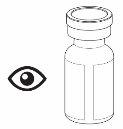 ! Важная информация, которую вы должны знать перед введением Ристигго или введением его другому человеку
! Важная информация, которую вы должны знать перед введением Ристигго или введением его другому человеку
- Для исключительного использования подкожно (под кожей).
- Используйте каждую ампулу только один раз.
- Проверьте свою дозу (возможно, вам понадобится более 1 ампулы для
приготовления назначенной дозы).
- Неиспользуйте Ристигго после даты истечения срока годности.
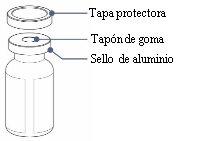 Перед использованием Ристигго проверьте, что указанная на ампуле доза совпадает с назначенной вами дозой. Неиспользуйте его, если доза не совпадает с назначенной. Свяжитесь с вашим врачом или медсестрой, чтобы узнать, что делать дальше.
Перед использованием Ристигго проверьте, что указанная на ампуле доза совпадает с назначенной вами дозой. Неиспользуйте его, если доза не совпадает с назначенной. Свяжитесь с вашим врачом или медсестрой, чтобы узнать, что делать дальше.- Неиспользуйте ампулу, если жидкость имеет видимые частицы. Лекарство должно быть бесцветным или светло-желтым, прозрачным или слегка опалесцирующим (белым перламутром).
- Невстряхивайте ампулу.
- Неиспользуйте ампулу, если она не имеет защитной крышки или если она повреждена. Если какая-либо ампула сломана или не имеет крышки, сообщите об этом и верните ее в аптеку.
- Если вы будете использовать непрограммируемую помпу, следуйте инструкциям производителя и указаниям вашей медсестры по заполнению инфузионной трубки и настройке дозы.
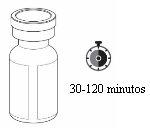 Хранение Ристигго
Хранение Ристигго
- Хранить в холодильнике (при температуре от 2°C до 8°C).
- Незамораживать.
- Хранить Ристигго в оригинальной упаковке, чтобы защитить его от света.
- Выньте упаковку из холодильника перед инъекцией. Чтобы сделать инъекцию более комфортной, дайте ампуле достичь комнатной температуры перед использованием лекарства. Это может занять от 30 до 120 минут. Не нагревайте его никаким другим способом.
! Храните это лекарство в недоступном для детей месте.
Содержание упаковки
- 1 ампула Ристигго (2 мл, 3 мл, 4 мл или 6 мл, в зависимости от назначенной вами дозы).
- Инструкция по применению Ристигго.
Пошаговые инструкции
- Подготовьтесь
Шаг1:Соберите все необходимые материалы на чистой и ровной рабочей поверхности:
- Включенов упаковку Ристигго:
- Ампула Ристигго.
- Инструкция по применению Ристигго.
! Проверьте свою дозу (возможно, вам понадобится более 1ампулы для
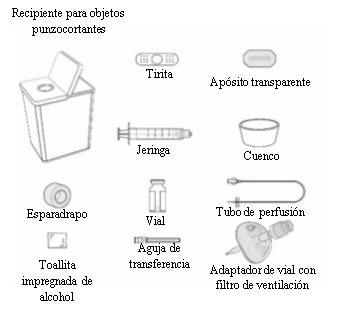 приготовления назначенной дозы).
приготовления назначенной дозы).
- Не включенов упаковку Ристигго:
- Шприц (5-10 мл, в зависимости от назначенной дозы).
- Игла для переноса калибра 18 или большего диаметра или адаптер ампулы с вентиляционным фильтром.
- Инфузионная трубка с иглой калибра 26 или большего диаметра. Инфузионная трубка должна иметь длину 61 см или меньше.
- Ватные шарики, пропитанные спиртом.
- Бинт или прозрачный пластырь.
- Вата.
- Контейнер для острых предметов.
- Чашка или бумажное полотенце для сбора излишков жидкости при заполнении инфузионной трубки.
- Шприцевая помпа (если вы будете использовать помпу).
! Материалы, показанные выше, используются только для иллюстрации. Ваши конкретные материалы могут выглядеть по-другому.
Шаг2:Очистите свою рабочую поверхность и вымойте руки
- Очистите свою рабочую поверхность дезинфицирующим средством и вымойте руки тщательно с мылом и водой или используйте дезинфицирующее средство для рук. Высушите их чистым полотенцем.
- Подготовьте ампулу и шприц
! Проверьте свою дозу (возможно, вам понадобится более 1ампулы для приготовления назначенной дозы).

 Шаг3:Удалите защитную крышку с ампулы
Шаг3:Удалите защитную крышку с ампулы
- Удалите защитную крышку с ампулы, держа за край и поднимая ее вверх.
- Очистите резиновую пробку ватным шариком, пропитанным спиртом. Дайте ей высохнуть на воздухе.
- Оставьте алюминиевое уплотнение на месте.
- Проверьте свою дозу (если вам нужно более одной ампулы для приготовления назначенной дозы, удалите все крышки и очистите пробки).
! Если вы будете использовать адаптер ампулы с вентиляционным фильтром вместо иглы для переноса, вы можете перейти直接 к шагу7.
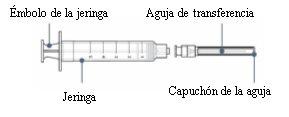
Шаг4: Подключите иглу для переноса к шприцу
- Выньте шприц и иглу для переноса из их пластиковых упаковок. Не трогайте кончик шприца или основание иглы, чтобы избежать загрязнения.
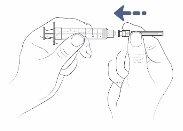 С колпачком иглы еще на месте, осторожно толкайте или поворачивайте иглу для переноса, чтобы подключить ее к шприцу до тех пор, пока она не будет надежно подключена.
С колпачком иглы еще на месте, осторожно толкайте или поворачивайте иглу для переноса, чтобы подключить ее к шприцу до тех пор, пока она не будет надежно подключена.
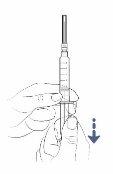 Шаг5:Введение воздуха в шприц
Шаг5:Введение воздуха в шприц
- Медленно вытащите поршень, чтобы ввести воздух в шприц.
- Заполните шприц примерно тем же количеством воздуха, что и количество лекарства в ампуле.
- Держите колпачок иглы на месте во время этого.

Шаг6: Удалите колпачок иглы для переноса
- Держите шприц одной рукой.
- Другой рукой, держите колпачок иглы для переноса и вытащите его.
- Поместите колпачок на стол, чтобы выбросить его позже.
- Нетрогайте кончик иглы.
- Непозволяйте кончику иглы касаться любого материала после удаления колпачка.
Шаг7: Введите иглу для переноса или адаптер ампулы с вентиляционным фильтром напрямую в ампулу
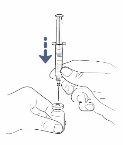 Следуйте соответствующим инструкциям для метода введения, который вы будете использовать:
Следуйте соответствующим инструкциям для метода введения, который вы будете использовать:
С иглой для переноса
- Поместите ампулу на стол и введите иглу для переноса напрямую через резиновую пробку.
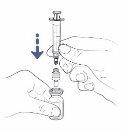 С адаптером ампулы
С адаптером ампулы
- Поместите ампулу на стол и введите адаптер ампулынапрямую через резиновую пробку.
- Подключите шприц к адаптеру ампулы с вентиляционным фильтром.
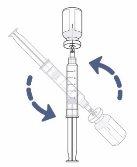
Шаг8: Поверните ампулу и шприц
- Теперь поместите ампулу и шприц вниз.
- Держите иглу для переноса или адаптер ампулы с вентиляционным фильтром внутри ампулы.
! Если вы будете использовать адаптер ампулы с вентиляционным фильтром, вы можете перейти直接 к шагу11.
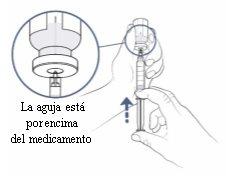 Шаг9: Нажмите воздух из шприца в ампулу
Шаг9: Нажмите воздух из шприца в ампулу
- Проверьте, что игла для переноса указывает вверх, и убедитесь, что кончик иглы находится в пространстве над лекарством.
- Медленно нажмите поршень шприца вверх, чтобы ввести весь воздух из шприца в ампулу. Держите большой палец, нажимающий на поршень шприца все время, чтобы не допустить попадания воздуха в шприц.
- Держите кончик иглы в пространстве над лекарством все время.
- Ненажимайте воздух в лекарство, поскольку могут образоваться пузырьки.
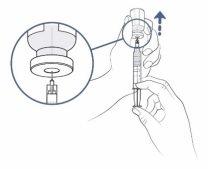
Шаг10: Подготовьтесь кзаполнению шприца
- Держите большой палец, нажимающий на поршень шприца. Другой рукой, медленно и осторожно вытащите ампулу вверх, чтобы кончик иглы был полностью покрыт жидким лекарством.
Шаг11:Заполните шприц максимально возможным количеством лекарства
! Проверьте свою дозу (возможно, вам понадобится более 1ампулы для приготовления назначенной дозы).
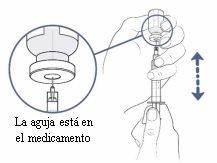 Теперь медленно вытащите поршень шприца вниз и заполните шприц лекарством.
Теперь медленно вытащите поршень шприца вниз и заполните шприц лекарством.
Если вы используете иглу для переноса для заполнения шприца, сделайте следующее:
- Продолжайте медленно вытащить ампулу вверх, чтобы держать кончик иглы полностью покрытым жидкостью.
- Откорректируйте кончик иглы, чтобы держать его в жидкости. Это поможет вам извлечь максимальное количество лекарства из ампулы.
- Теперь у вас должно быть в шприце количество лекарства, превышающее назначенную дозу. Эта разница будет скорректирована позже.
! Также будет очень небольшое количество лекарства, которое вы не сможете извлечь из ампулы. Вы должны выбросить его вместе с ампулой позже.
! Если вы используете адаптер ампулы с вентиляционным фильтром, отключите шприц от адаптера. Оставьте адаптер ампулы с вентиляционным фильтром в ампуле. Вы можете выбросить его в конце введения. Теперь вы можете перейти直接 к шагу14.
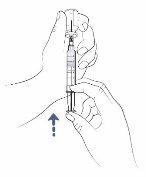
Шаг12: Удалите воздух из шприца
- Если остается пространство между жидкостью шприца и верхней частью шприца, медленно нажмите поршень, чтобы вернуть воздух в ампулу.
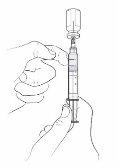
- Если вы видите воздушные пузырьки в шприце, вы можете удалить их, осторожно постукивая шприц пальцем. Теперь медленно нажмите поршень, чтобы воздух вернулся в ампулу.
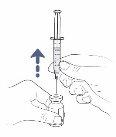 Шаг13: Удалите иглу для переноса из ампулы и шприца
Шаг13: Удалите иглу для переноса из ампулы и шприца
- Переверните ампулу и шприц и поместите ампулу на рабочую поверхность.
- Удалите иглу для переноса и шприц из ампулы, вытащив шприц прямо вверх.
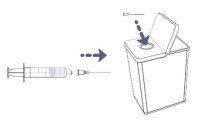 Удалите иглу для переноса из шприца, повернув или вытащив ее осторожно из основания иглы.
Удалите иглу для переноса из шприца, повернув или вытащив ее осторожно из основания иглы.- Нетрогайте иглу. Ненадевайте колпачок на иглу.
- Бросьте иглу в контейнер для острых предметов.
- Если вы используете адаптер ампулы с вентиляционным фильтром вместо иглы, не нужно удалять адаптер из ампулы перед утилизацией.
- Если вам нужно использовать другой флакон для приготовления назначенной дозы, повторите шаги 4-13 с той же шприцем и новой иглой для переноса или новым адаптером для флакона с вентиляционным фильтром, чтобы избежать загрязнения.
- Подготовьтесь к перфузии
- Поместите шприц на чистую рабочую поверхность, пока готовите трубку перфузии.
- Выньте трубку перфузии из защитной сумки.
- Удалите заглушку с конца трубки перфузии, повернув ее. Поместите заглушку на рабочую поверхность, чтобы выбросить ее позже.
- Подключите трубку перфузии к шприцу до тех пор, пока они не будут надежно соединены. Нетрогайте кончик шприца или основание трубки перфузии, чтобы избежать микробов.
- Неснимайте колпачок с иглы трубки перфузии.
- Убедитесь, что у вас под рукой есть чашка или бумажные полотенца, которые можно использовать для сбора препарата из трубки перфузии, который не нужен.
- Оставьте колпачок на игле трубки перфузии и держите его над чашкой. Затем держите шприц в вертикальном положении и наполните трубку перфузии препаратом, медленно нажимая на поршень шприца.
- Количество жидкости, оставшейся в шприце, должно соответствовать назначенной дозе.
- Если вы собираетесь использовать шприц-насос, прочитайте инструкции производителя, чтобы настроить и использовать насос, и наполните трубку перфузии.
- Выберите место перфузии в нижней левой или правой части живота (под ребрами), ниже пупка.
- Неиспользуйте область кожи, которая:
- чувствительна, синяя, красная или твердая;
- имеет рубцы или растяжки.
- Подготовьте место перфузии:
- Очистите область перфузии салфеткой, смоченной в спирте, и дайте ей высохнуть на воздухе.
- Аккуратно удалите колпачок с иглы трубки перфузии.
- Сложите крылья бабочки, чтобы приблизить их, и держите их большим и указательным пальцами одной руки.
- Другой рукой, зажмите кожу двумя пальцами, чтобы создать складку.
- Вставьте иглу в центр кожи и протолкните ее под кожу.
- Игла должна легко войти. Если это трудно, можно немного вытащить иглу.
- Возможно, вы используете трубку перфузии без иглы типа бабочки на конце. Ваша медсестра или врач объяснит вам, как вставить иглу.
- Используйте прозрачный пластырь, чтобы держать иглу на месте. Некоторые наборы перфузии имеют встроенный клей.
- Можно использовать лейкопластырь, чтобы прикрепить трубку перфузии к коже.
- Перфузия и окончание
- Сядьте удобно и сильно нажмите на поршень шприца, чтобы начать перфузию препарата.
- Вы должны вводить препарат с такой скоростью, которая вам удобна. Продолжайте нажимать, пока не останется препарат в шприце.
- До и во время перфузии убедитесь, что трубка перфузии не согнута и не скручена. Если это произойдет, может быть нарушен поток препарата. В этом случае исправьте изгиб трубки перфузии и попробуйте еще раз.
- Если вы чувствуете себя некомфортно или часть препарата протекает обратно в трубку перфузии, можно нажимать медленнее.
- Прежде чем использовать шприц-насос, убедитесь, что вы понимаете следующее:
- Как настроить шприц-насос (установите скорость перфузии не более 20 мл в час).
- Как настроить сигнал о засоре на максимальном уровне.
- Как начать работу шприца-насоса.
- Что означают различные звуки и сигналы шприца-насоса и что делать в каждом случае.
- Как остановить шприц-насос.
- Когда вы будете готовы к перфузии:
- Поместите шприц в его держатель и начните работу насоса, следуя его инструкциям.
- Сядьте удобно, пока насос вводит вам препарат.
- До и во время перфузии убедитесь, что трубка перфузии не согнута и не скручена. Если это произойдет, может быть нарушен поток препарата. В этом случае исправьте изгиб трубки перфузии и попробуйте еще раз.
- Как только вы закончите, остановите насос, следуя его инструкциям.
- Удалите шприц из насоса.
- Возможно, после удаления иглы на месте перфузии останутся одна или две капли жидкости. Это нормально.
- Выбросьте использованный флакон и оставшийся препарат в контейнер для острых предметов.
- Накройте место перфузии чистым пластырем, например, бинтом.
- Выбросьте любой другой использованный материал в домашний мусор.
Шаг14: Проверьте свою дозу еще раз
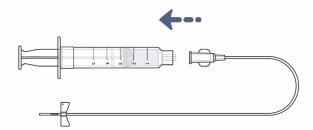 Шаг 15: Подключите трубку перфузии к шприцу
Шаг 15: Подключите трубку перфузии к шприцу
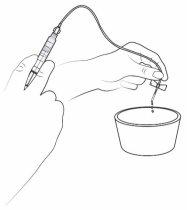
Шаг 16: Наполните трубку перфузии препаратом
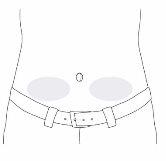
Шаг 17: Выберите и подготовьте место перфузии
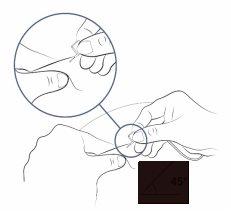 Шаг 18: Вставьте иглу трубки перфузии
Шаг 18: Вставьте иглу трубки перфузии
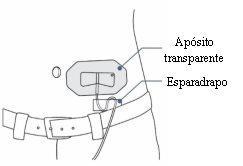 Шаг 19: Зафиксируйте иглу трубки перфузии
Шаг 19: Зафиксируйте иглу трубки перфузии
Шаг 20:Начните перфузию
Следуйте инструкциям, соответствующим методу перфузии, который вы собираетесь использовать:
Ручная инъекция
Шприц-насос
! Примечание: В трубке перфузии останется некоторое количество препарата. Это нормально, и его можно выбросить в контейнер для острых предметов.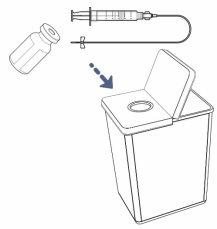
Шаг 21: Завершите перфузию и проведите очисткуКак только перфузия будет завершена, непытайтесь удалить пластырь с иглы. Удалите их вместе с кожей и выбросьте вместе с шприцем в контейнер для острых предметов.
! Всегда держите контейнер для острых предметов вне поля зрения и досягаемости детей.
- Страна регистрации
- Активное вещество
- Требуется рецептДа
- Производитель
- Информация носит справочный характер и не является медицинской рекомендацией. Перед приемом любых препаратов проконсультируйтесь с врачом. Oladoctor не несет ответственности за медицинские решения, принятые на основе этого контента.
- Аналоги РИСТИГГО 140 мг/мл РАСТВОР ДЛЯ ИНЪЕКЦИЙФорма выпуска: ИНЪЕКЦИОННЫЙ РАСТВОР ДЛЯ ИНФУЗИЙ, 120 мг (80 мг/кг) белимумабАктивное вещество: БелимумабПроизводитель: Glaxosmithkline (Ireland) LimitedТребуется рецептФорма выпуска: ИНЪЕКЦИОННЫЙ РАСТВОР, 200 мгАктивное вещество: БелимумабПроизводитель: Glaxosmithkline (Ireland) LimitedТребуется рецептФорма выпуска: ИНЪЕКЦИОННЫЙ РАСТВОР ДЛЯ ИНФУЗИЙ, 400 мг (80 мг/кг) белимумабАктивное вещество: БелимумабПроизводитель: Glaxosmithkline (Ireland) LimitedТребуется рецепт
Врачи онлайн по РИСТИГГО 140 мг/мл РАСТВОР ДЛЯ ИНЪЕКЦИЙ
Консультация по дозировке, побочным эффектам, взаимодействиям, противопоказаниям и продлению рецепта на РИСТИГГО 140 мг/мл РАСТВОР ДЛЯ ИНЪЕКЦИЙ – по решению врача и с учетом местных правил.



